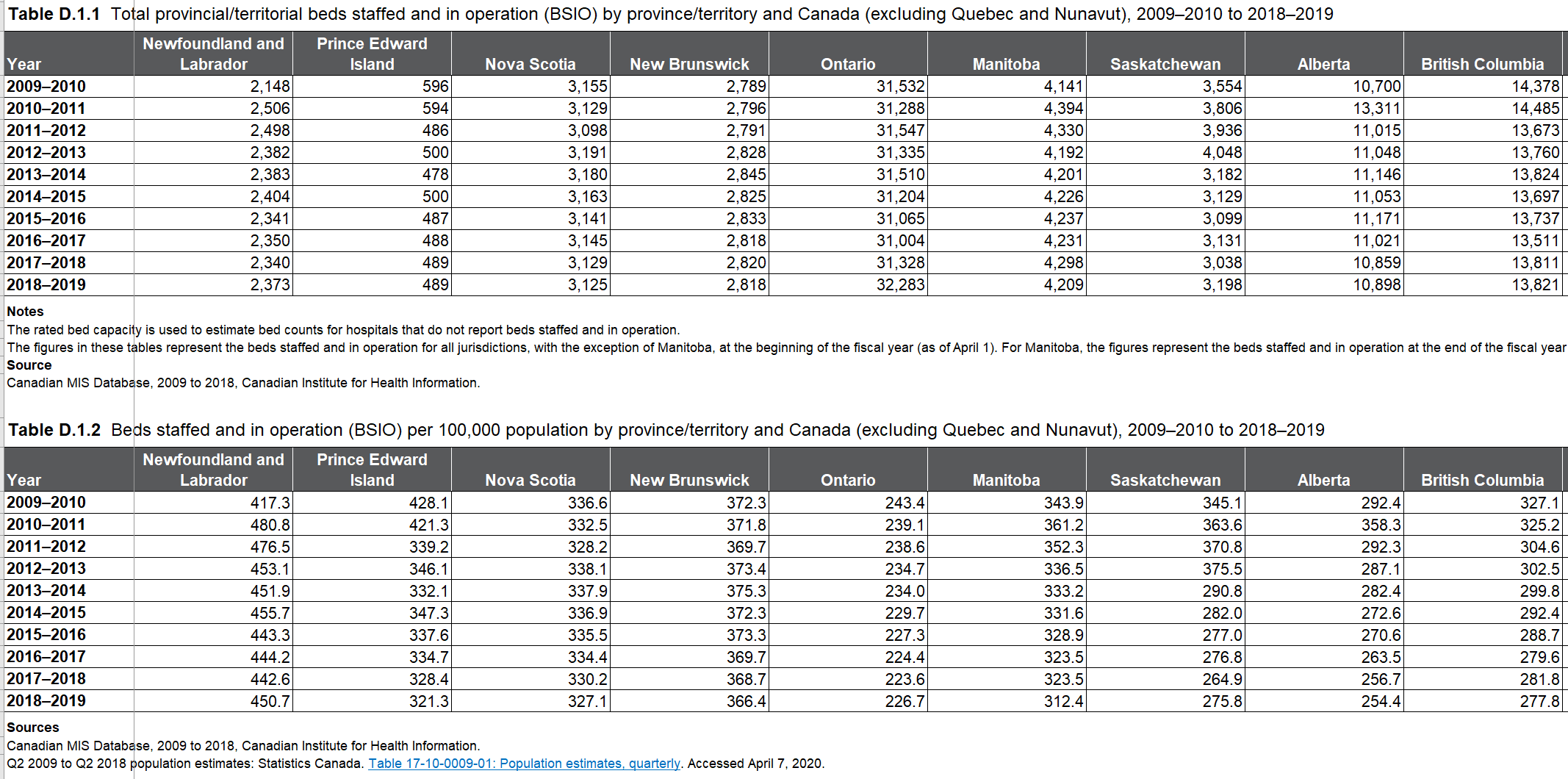The massive cut in the number of hospital beds in Ontario in the 1990s is, by now, well known. Community and labour movement campaigns over the last fifteen years stopped the decline in the number of beds, but the push for cuts is relentless. Hospital beds per capita have continued to decline right up until the most recent data reported. Moreover, Ontario remains a low capacity outlier -- with far fewer beds per capita than other provinces.
There was even a decline in the absolute number of Ontario ICU, Obstetric, Pediatric, and Complex Continuing Care ("LTC") beds, with the latter category seeing the sharpest decline. Acute, Rehab, and Mental Health and Addiction beds increased -- although the increase in the latter was so modest that beds per capita still declined.
The decline continued after the election of the PC Ford government in 2018. The most recent data reported by CIHI is for 2020-21 - the start of COVID. Overall, the number of beds per capita in Ontario hospitals has gone down from 226.7 in 2018/19 to 224.9 in 2020-21, a 0.8% decline in two years. Since 2009/10, that is a 7.6% decline.
If we had stayed at the same level as 2018/19 we’d have an extra 265 beds – a little more than one extra average-sized hospital. If Ontario had the same hospital beds per capita as 2009/10, we would have an extra 2,724 hospital beds. That's like we are missing four very large hospitals.
Canada (excluding Quebec) had 20.1% more acute care beds per capita than Ontario in 2020-21.
For all categories of beds, Canada (excluding Quebec) had 9.5% more hospital beds per capita than Ontario.
The low number of acute care beds in Ontario is part of a long term trend. If anything, it has gotten worse. For acute care, Canada excluding Quebec had 17.8% more beds per capita in 2018-19 and 18.3% more in 2009-10.





Comments
Post a Comment